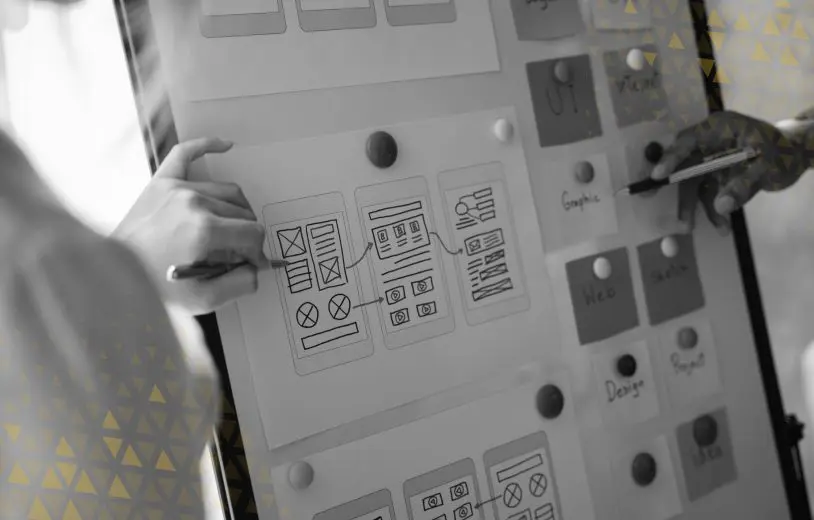Key Takeaways
- Metrics such as reduced traffic, high bounce rates, and short visit durations indicate that users are not finding the site engaging or relevant.
- Regular content audits revealing outdated or underperforming material, along with poor search engine rankings, suggest the need for updated content strategies and SEO improvements.
- The emergence of new web technologies (e.g., HTML5, CSS3) and evolving web standards necessitate updates to ensure the website remains functional and secure and provides an optimal user experience.
- Adherence to the latest accessibility standards is crucial for inclusivity and legal compliance. A redesign can address these requirements, ensuring the site is accessible to all users.
- Direct insights from users and staff can highlight pain points and areas where the website fails to meet expectations, signaling the need for a redesign.

A successful website is an ever-evolving entity, and it should continually be adapting to meet the dynamic needs and interests of its customers. This article serves as your guide to identifying when your website is lagging and necessitates a transformative redesign. We’ll uncover the telltale signs, from the user interface no longer serving its purpose to SEO strategies that need updating.
It’s not just about staying trendy; it’s about maintaining a functional, effective, and engaging online presence. Join us as we explore the essential elements that signal the need for a website overhaul, ensuring your digital footprint remains impactful in a world where first impressions are made online.

Identifying the Need for a Website Redesign
When considering a website redesign, key metrics from Google Analytics and Google Search Console can guide your decision. Here are some critical data points to review:
- Overall Traffic Trends: A steady decline in website traffic suggests it’s time to revamp and reengage your audience.
- Bounce Rate and Visit Duration: High bounce rates and short visits, as shown in Google Analytics, indicate poor user engagement.
- Search Engine Performance: Google Search Console can reveal if your site is underperforming in search results, pointing to SEO improvements.
- Content Relevance and Performance: A content audit will help identify outdated or underperforming pieces of content.
- User and Employee Feedback: Direct insights into user experience can highlight unnoticed pain points.
Each of these areas can signal the need for a comprehensive website redesign to ensure your online presence remains effective and competitive.
In addition to these key metrics, conducting a thorough website content audit is essential. This audit will reveal if your landing pages are effectively addressing the needs of your potential customers. Are these pages generating leads as expected? Are they clearly communicating the value of your products or services? Identifying customer pain points through these pages and how well they resonate with visitors can be a clear indicator of the necessity for a redesign. This process helps in understanding whether your existing website is aligned with the current demands of your audience and market.

THE IMPACT OF TECHNOLOGY AND WEB STANDARDS ON REDESIGN
Technological advancements and evolving web standards play a crucial role in the need for website redesign. Understanding these changes helps in creating a website that is not only modern but also future-proof. Key aspects include:
- Advancements in Web Technologies: Emerging technologies like HTML5 and CSS3 are transforming web development, offering superior design and user experience capabilities. Embracing these advancements ensures your website remains modern and functional.
- Accessibility and Compliance: Keeping up with the latest accessibility standards is crucial for an inclusive web presence. A redesign can address these requirements, ensuring your site is accessible to all users and compliant with legal standards.
- The Phasing Out of Cookies: The decline of traditional cookie-based tracking, due to privacy concerns, demands new approaches to user data collection. A redesign can integrate these new methods, aligning with privacy regulations and user expectations.
- Shift Towards AI in Search: AI’s influence in search engines shifts focus towards matching content with user intent. This development necessitates content that genuinely addresses user queries and provides value, going beyond mere keyword optimization.
- Mobile Responsiveness: With the rise in mobile internet usage, ensuring your website is mobile-friendly is imperative. A redesign focusing on responsiveness caters to the growing number of mobile users.
Additionally, technological advancements greatly influence the design and functionality of landing pages, which are crucial for converting visitors into customers. A website’s visual appeal and its compliance with modern web standards build trust among website visitors. Furthermore, an engine-optimized, eye-catching website supports your marketing campaigns by improving your search engine result positioning. Staying abreast of these technological changes ensures your website not only looks great but also functions efficiently, catering to both the aesthetic and practical expectations of users.

PLANNING THE WEBSITE REDESIGN PROCESS
The planning phase of a website redesign is critical in setting the project up for success. Consider how each element of your site can contribute to different phases of the marketing funnel, whether it is inspiration, education, generating leads, or increasing conversions.
Strategically placed CTA buttons and well-designed landing pages that capture email addresses are vital. The redesign process should also focus on solving various types of pain points your business might face, such as financial constraints or productivity issues. By addressing these through an effective redesign, you can streamline your business processes and enhance user engagement.
Key steps to consider:
- Define Your Goals and Objectives: Start by clearly defining what you want to achieve with the redesign. Improve user experience, increase traffic, enhance SEO, or refresh your brand image.
- Conduct a Comprehensive Website Audit: Assess your current website to identify areas that need improvement in site structure, content, user experience, and technical SEO aspects.
- Understand Your Audience: Deepen your understanding of your target audience’s needs, preferences, and behaviors.
- Develop a Content Strategy: Plan your content to align with user intent and SEO best practices, including types of content, content structure, and key messaging.
- Choose the Right Technology and Tools: Select the CMS, frameworks, and tools that best serve your redesign goals, considering scalability, security, and ease of use.
- Create a Project Timeline and Budget: Establish a realistic timeline and budget for the redesign process.
- Assemble the Right Team: Whether it’s an in-house team or a partnership with a specialized agency like Fahrenheit Marketing, having the right expertise is crucial.

Executing the Redesign Process
In the redesign process, it’s essential to tailor each page of your website to its specific role in the customer journey. It’s not just about creating landing pages for campaigns; every page should be thoughtfully designed to reflect the purpose it serves in your marketing funnel. From providing detailed product information to nurturing customer relationships, each page plays a unique role. The design and content of these pages should align with their objectives, whether it’s educating potential customers, nurturing leads, or closing sales.
Effective website design transcends mere visual appeal. It’s about forging a clear and engaging pathway for users to connect with your brand at various stages of their journey.
This involves intuitive site navigation, persuasive and informative copy, and strategically placed calls-to-action that guide visitors toward the next steps, be it learning more about a product, signing up for a newsletter, or making a purchase.
Redesigning your website also means considering how it can best support your sales and customer service teams, facilitating their efforts in lead generation, customer education, and engagement. Each page should be a cog in a well-oiled machine, working seamlessly to address the diverse needs and pain points of your customers throughout their journey._
The key steps to ensure success in the redesign process include:
Technical Development: Setting up the chosen CMS, coding the site structure, and integrating technical SEO.
Design Implementation: Applying new design elements that align with your brand identity and enhance user experience.
Content Integration: Uploading and organizing new content, optimizing it for SEO and user engagement.
Setting up 301 Redirects: Implementing 301 redirects to ensure that all old URLs seamlessly point to the new pages, maintaining search rankings and providing a smooth user experience.
Testing and Quality Assurance: Rigorous testing is essential to iron out any bugs and ensure the site functions seamlessly across different devices and browsers.
Launch and Monitoring: After launching the redesigned site, continuous monitoring is crucial for addressing any immediate issues and making necessary adjustments.
A systematic approach to executing the redesign process is vital for achieving a website that looks modern and appealing and performs excellently in terms of user engagement and SEO.
Fahrenheit Marketing as Your Ideal Redesign Partner
As your journey towards a website redesign concludes, choosing the right partner is paramount. Fahrenheit Marketing stands as your ideal choice. With our expertise in web design, development, and SEO, we are adept at transforming your vision into an effective online presence. Our commitment ensures a redesign that is visually stunning and strategically optimized for your target audience and business goals.
We specialize in creating high-converting landing pages that are visually appealing and strategically crafted to meet search engine optimization goals. Enhancing the overall website design ensures it aligns with your brand’s identity and effectively communicates with your target audience.
Our track record of successful redesign projects demonstrates our ability to elevate brands and enhance their digital footprint. We believe in creating websites that are not only aesthetically pleasing but also functionally robust, user-friendly, and SEO-optimized. Our team works closely with you every step of the way, ensuring the final product meets and exceeds your expectations.
Ready to take your website to the next level? Contact Fahrenheit Marketing today to begin your journey toward a remarkable website redesign.
